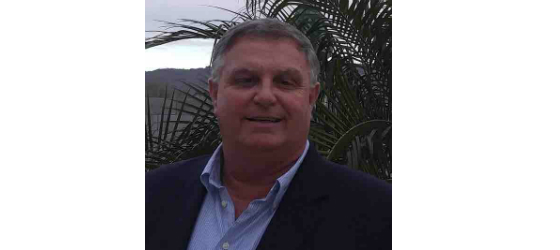April 2017, Vol. 244, No. 4
Features
Addressing Harsh Cryogenic Proving Conditions

Movement of hydrocarbon products via pipeline or other transport methods is critical in the oil and gas industry. Whether moving heavy bitumen or light gases converted to liquid, the economy, both locally and globally, depends on the transportation of these products. As these hydrocarbon products are transported and custody is transferred, flow meters provide an accurate source of measurement.
The accuracy of flow meters is verified using a proving device. Stringent procedures regulate the proving processes as they facilitate financial transactions (reference API and AGA standards).
For ease of transport, storage and consumption, some of the hydrocarbon gases are maintained in liquid form. Examples include NGLs (natural gas liquids) which are methane, ethane, propane, butane and pentane as well as LNG (liquid natural gas). To keep these gases in a liquid state, it is necessary to cool to an extremely low temperature or maintain high pressurization, or some combination of both. The process of cooling these gases to become liquid is called cryogenics. The cryogenic process for the above-referenced NGLs and LNG involves dropping temperatures to ranges between -30o to -260oF (-34 to -162oC).
With NGL products kept at cryogenic temperatures, accurate custody transfer measurement and verification have challenged the measurement industry for years. Currently, custody transfer of cryogenic NGLs and LNG is accomplished using tank volume and level measurements. These are static measurements based on correction tables and calculations. Due to this process, uncertainty values and fiscal offsets are generally larger.
Flow metering, using ultrasonic or Coriolis measurement technologies, is another option for measuring NGLs or LNG. Metering presents its own set of challenges including a lack of calibration facilities to calibrate flow meters at cryogenic conditions. Flow meters are calibrated with water at ambient temperatures and then temperature correction is applied to compensate for cryogenic conditions. When flow meters are used in any custody transfer application, there needs to be a verification or proving system in place.
Flow Management Devices, LLC (FMD), a manufacturer of Uni-Directional Captive Displacement Small Volume Provers (UCDPs), was tasked with the challenge of designing a prover for cryogenic NGLs and LNG. The engineering and design team was required to prove products with temperature specifications as low as -260oF (-162oC) and to operate at ambient temperatures for water-draw certifications. The team went to work on enhancing and testing the UCDP for cryogenic services.
The engineers involved first identified all areas of the prover that needed to be modified to accommodate the extremely low temperatures and dry conditions present in the cryogenic process. Then they identified the following challenges associated with cryogenic proving.
- Potential for ice buildup and static
- Material integrity at low temperatures
- Insulation materials’ ability to maintain temperatures
- Ease of serviceability
After an extensive material review and testing process, the FMD UCDP’s prover barrel and drive system were modified to incorporate hardware and seals that can withstand the low temperatures, while still operating properly for ambient water-draw conditions. The prover barrel was subjected to cryogenic conditions and impact testing.
FMD added temperature isolation and modified the grounding system to eliminate static and tested extensively to ensure the prover was sufficiently airtight. Other modifications included a dry nitrogen purge with a smart lockout safety feature and a glass window into the enclosure for easy visibility. Although these changes were made to the FMD UCDP to make it viable for cryogenic-proving applications, the prover still meets the same demanding industry specifications and provides extremely accurate measurement with minimal product displacement.

Caption: A flow management device unidirectional captive displacement cryogenic prover installed in a liquid propane transfer station.
FMD was presented with the opportunity to install a cryogenic prover for a liquid ethane export terminal facility in La Porte, TX. The terminal is located on the Houston Shipping Channel and connects via pipeline to the Marcellus and Utica Shale regions. Ethane is a byproduct of natural gas and crude oil, mainly used for ethylene which is in turn used in plastic production. Because of an abundant supply in the U.S. market, ethane is being exported to Europe, Asia and countries in other regions.
This terminal came online in September 2016 and is the largest in the world. It includes two trains, two docks and has the potential of loading up to 200,000 bpd onto marine vessels. This cryogenic liquid ethane metering project is the first of its kind and is a steppingstone for measuring NGLs and LNG using flow meters and an FMD small-volume proving system.

Caption: The liquid ethane FMD-60 unidirectional captive displacement cryogenic prover prior to shipping to the La Porte, TX ethane export facility
On a global level, both the NGL and LNG markets are expected to expand and grow. With these expectations comes the need for in situ measurement and accurate proving methods. Metering of LNG is not new, but the use of such metering for custody transfer has not been entirely accepted industrywide. The above enhancements to the FMD prover now provide the capabilities to prove NGLs and LNG meters in situ, allowing for acceptance per the industry standards for liquids.
FMD has and will continue working with VSL, The National Metrology Institute (NMI) of The Netherlands, to finalize testing for industry acceptance of metering and proving in the LNG market. Metering and proving verification of LNG for custody transfer will be a milestone which will allow for extremely accurate measurement in the fast-growing LNG market.
Author: Greg Williams is vice president of sales at Flow Measurement Devices and has over 30 years’ experience in the measurement industry including positions with Micro Motion – Emerson, FMC-Smith Meters, Honeywell-Enraf and Flow Management Devices. His experience of measurement concepts and metering technologies includes positive displacement, turbine, Coriolis, ultrasonic and meter provers with expertise in design, applications and system requirements.





Comments